
- Shandong Loyal Industrial Co.,Ltd.
- Macaroni Production Machine Instant Noodle Machine Biscuit Making Machine
Home> Company News> Everything You Need to Know About Japanese Bread Crumbs Processing Line

Everything You Need to Know About Japanese Bread Crumbs Processing Line
2024-06-07 11:13:13Introduction to Japanese Bread Crumbs
Japanese bread crumbs, also known as panko, are a staple in both traditional and modern culinary practices. These breadcrumbs are distinctively lighter and crispier than their Western counterparts, making them a preferred choice for achieving a crunchy texture in various fried dishes. Panko is typically made from crustless white bread that is processed into flakes rather than crumbs, providing a delicate crunch and an airy texture.
The production of Japanese bread crumbs involves a specialized process that ensures the unique characteristics of panko are maintained. The japanese bread crumbs processing line is designed to efficiently produce high-quality panko while meeting industrial standards. This processing line is a testament to advanced food machinery technology, combining precision, efficiency, and innovation.
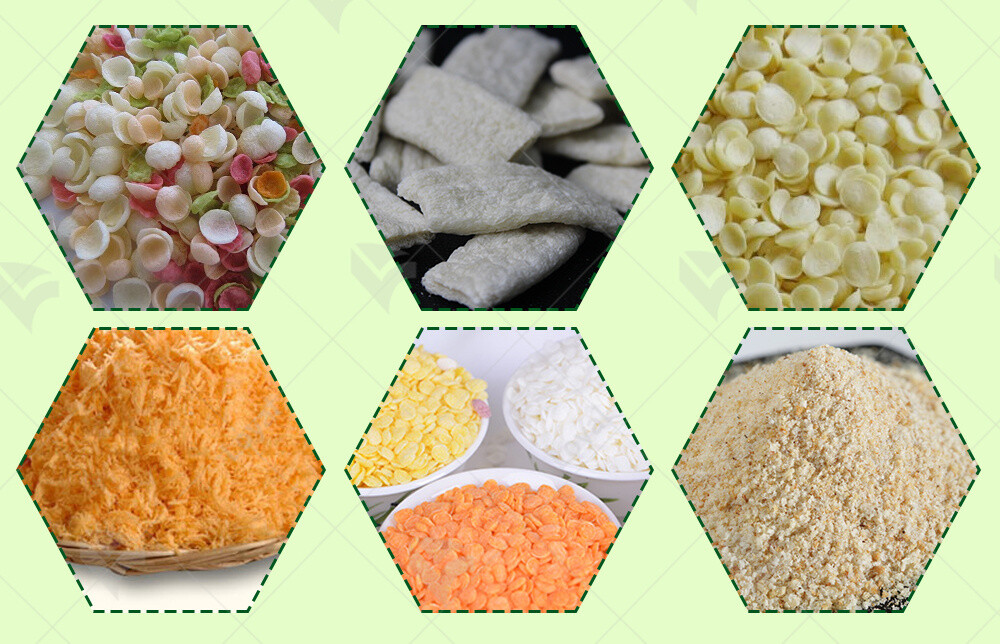
Overview of Processing Line Components
The japanese bread crumbs processing line comprises various components that work in harmony to produce high-quality panko. Each component is designed to handle specific tasks within the production process, ensuring seamless operation and optimal output.
|
Component |
Function |
Key Specifications |
|
Dough Mixer |
Combines ingredients to form a consistent dough |
Capacity: 100-500 kg per batch, Stainless steel construction |
|
Fermentation Room |
Allows dough to rise under controlled conditions |
Temperature control: 25-35°C, Humidity control: 75-85% |
|
Dough Divider |
Divides dough into uniform portions for baking |
Precision cutting mechanism, Adjustable portion sizes |
|
Baking Oven |
Bakes the dough into bread loaves |
Temperature range: 150-250°C, Conveyor system for continuous baking |
|
Cooling Conveyor |
Cools baked loaves to room temperature |
Length: 10-20 meters, Stainless steel mesh belt |
|
Bread Crumb Crusher |
Crushes baked bread into coarse crumbs |
Adjustable crushing blades, Capacity: 200-1000 kg/h |
|
Drying Oven |
Dries crumbs to the desired moisture level |
Temperature range: 50-150°C, Multi-layer drying trays |
|
Sifting Machine |
Sifts crumbs to ensure uniform size |
Multi-deck sifting screens, Vibration motor |
|
Packaging Machine |
Packages the finished panko into bags |
Automated weighing and sealing, Capacity: 20-100 bags/min |

Key Features of Processing Equipment
Each piece of equipment in the japanese bread crumbs processing line is designed with specific features to enhance efficiency, quality, and safety. The following table outlines these key features in detail:
| Equipment | Key Features | Benefits |
|
Dough Mixer |
High-speed mixing blades, Timer control |
Ensures uniform dough consistency, Reduces mixing time |
|
Fermentation Room |
Insulated panels, Digital control system |
Maintains optimal fermentation conditions, Energy efficient |
|
Dough Divider |
Hygienic design, Easy to clean |
Ensures uniform loaf sizes, Reduces waste |
|
Baking Oven |
Even heat distribution, Conveyor speed control |
Consistent baking quality, Adjustable for different products |
|
Cooling Conveyor |
Adjustable speed, Hygienic design |
Efficient cooling process, Easy maintenance |
|
Bread Crumb Crusher |
Stainless steel construction, Safety interlocks |
Durable and hygienic, Prevents accidents |
|
Drying Oven |
Hot air circulation, Adjustable drying time |
Ensures uniform drying, Preserves crumb quality |
|
Sifting Machine |
Quick-change screens, Low noise operation |
Easy customization, Comfortable working environment |
|
Packaging Machine |
Precision filling, Tamper-proof sealing |
Accurate packaging, Extends shelf life |
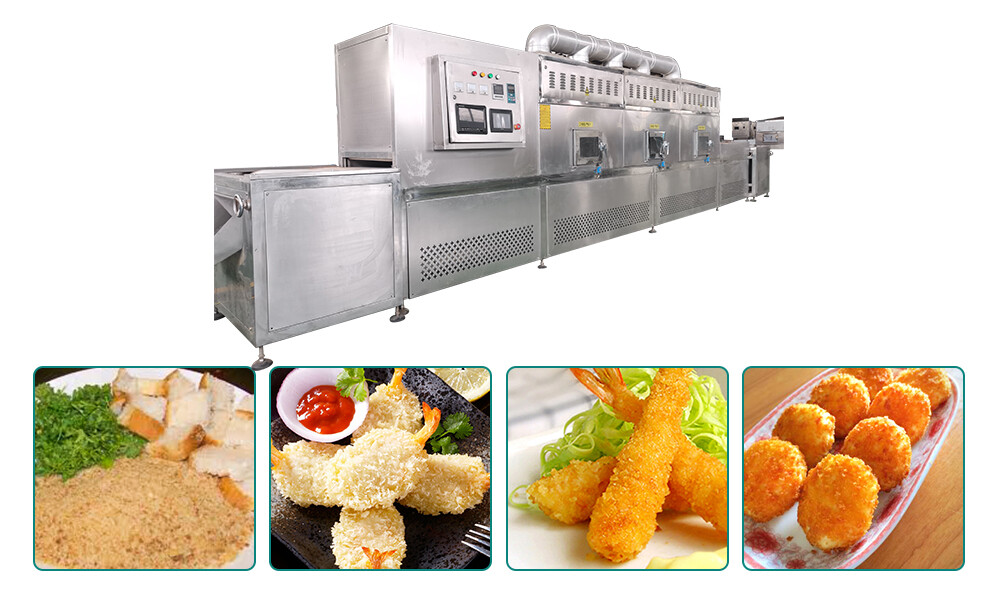
Bread Crumbs Production Process
The Japanese bread crumbs processing line involves a series of precise and technologically advanced steps to ensure high-quality output. Here's a detailed overview of the production process:
1. Mixing: The process begins with mixing the dough ingredients, which typically include flour, water, yeast, and other additives. The mixing must be thorough to ensure a consistent dough texture.
2. Fermentation: The mixed dough is allowed to ferment, a crucial step that develops the bread's flavor and texture. Controlled fermentation conditions are essential for achieving the desired characteristics of Japanese bread crumbs.
3. Baking: The fermented dough is then baked. The baking parameters such as temperature and time are meticulously controlled to produce bread with the right moisture content and texture.
4. Cooling: Once baked, the bread must cool down before it can be processed further. Cooling helps in maintaining the texture and prevents the crumbs from becoming too soft or clumpy during the next stages.
5. Cutting and Grinding: The cooled bread is cut into slices and then ground into crumbs. The grinding machinery is adjusted to produce crumbs of specific sizes, depending on the end-use requirements.
6. Drying: The bread crumbs are then dried to reduce moisture content, which is vital for extending their shelf life. The drying process needs to be carefully controlled to avoid burning or uneven drying.
7. Sieving: Finally, the dried crumbs are sieved to achieve uniform size. This step ensures consistency and quality in the final product.

Selecting the Right Machinery
Choosing the right machinery for a Japanese bread crumbs processing line is crucial for ensuring efficiency and product quality. Here are four key considerations:
Capacity and Scalability: Depending on production demands, select machinery that can handle the required capacity. Look for equipment that offers scalability to accommodate future growth.
Quality and Durability: Invest in high-quality, durable machines that can withstand continuous operation. Stainless steel construction is preferred for its longevity and ease of cleaning.
Automation and Control: Modern processing lines feature automation for consistency and efficiency. Machines with advanced control systems and programmable logic controllers (PLCs) allow for precise adjustments and monitoring.
Maintenance and Support: Ensure that the machinery comes with comprehensive support and maintenance services. Easy access to spare parts and technical assistance is vital to minimize downtime.
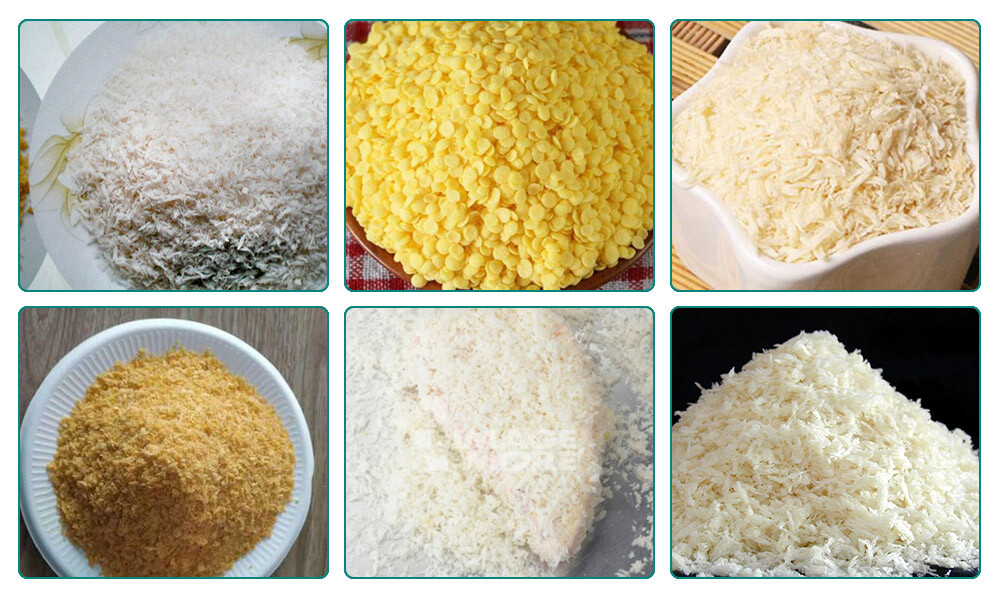
Installation and Setup Guide
Setting up a Japanese bread crumbs processing line involves careful planning and execution. Here is a detailed table to guide the installation and setup process:
|
Step |
Description |
Key Considerations |
|
1. Site Preparation |
Ensure the site is prepared with adequate space, ventilation, and utilities (water, electricity, etc.). |
Check for compliance with local regulations and safety standards. |
|
2. Equipment Unpacking |
Carefully unpack all machinery, checking for any damage during transit. |
Follow the manufacturer's unpacking instructions to avoid damage. |
|
3. Positioning |
Position the machines according to the layout plan, ensuring proper alignment and spacing. |
Maintain accessibility for operators and maintenance personnel. |
|
4. Electrical and Utility Connections |
Connect all machines to the required electrical and utility supplies. |
Ensure connections are secure and meet the equipment specifications. |
|
5. Calibration and Testing |
Calibrate the machines and perform initial test runs to ensure proper operation. |
Use test batches to verify settings and make necessary adjustments. |
|
6. Training |
Provide training for operators on the safe and efficient use of the machinery. |
Include instructions on routine maintenance and troubleshooting. |
|
7. Final Inspection |
Conduct a final inspection to ensure all components are correctly installed and operational. |
Document the setup process and address any remaining issues. |
By following these steps, you can ensure a smooth installation and setup of your Japanese bread crumbs processing line, resulting in efficient production and high-quality output.
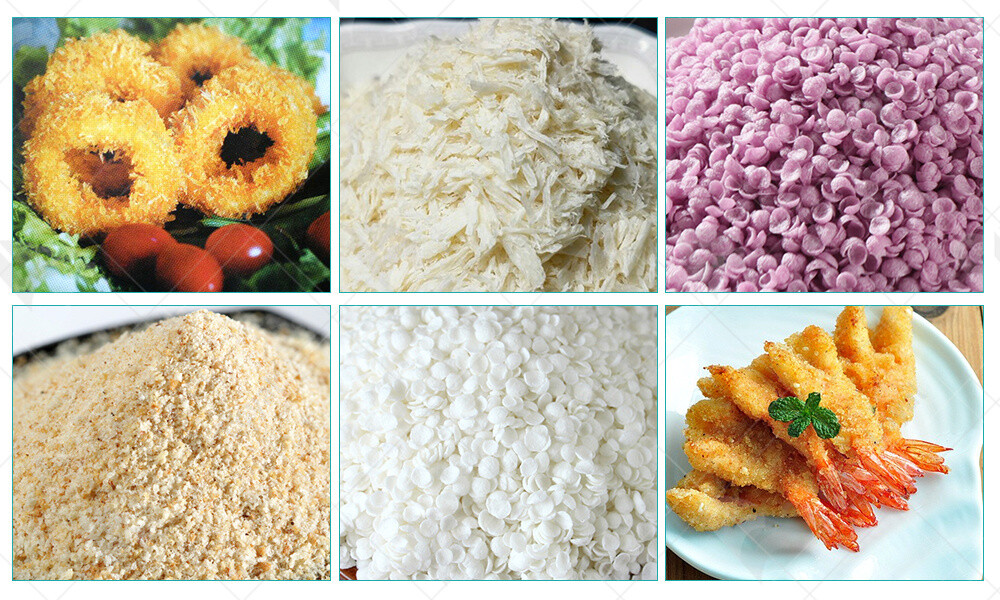
Maintenance and Troubleshooting Tips
Maintenance Tips
1. Regular Cleaning: Ensure that all parts of the Japanese bread crumbs processing line are cleaned regularly to prevent build-up of residue which can cause contamination and equipment malfunction.
2. Lubrication: Apply appropriate lubricants to moving parts to reduce friction and wear. Follow the manufacturer’s recommendations on the type and frequency of lubrication.
3. Inspection: Conduct routine inspections to identify any signs of wear and tear. Pay particular attention to belts, blades, and conveyor systems.
4. Calibration: Regularly calibrate sensors and other measurement devices to maintain accuracy in the processing line.
5. Spare Parts Inventory: Maintain an inventory of essential spare parts such as belts, blades, and electrical components to minimize downtime in case of equipment failure.
Troubleshooting Tips
|
Issue |
Possible Causes |
Solutions |
|
Irregular Bread Crumb Size |
Incorrect blade settings, worn blades |
Check and adjust blade settings, replace blades if necessary |
|
Machine Overheating |
Insufficient lubrication, clogged vents |
Ensure proper lubrication, clean vents and cooling systems |
|
Excessive Noise |
Loose components, worn bearings |
Tighten all components, replace bearings if needed |
|
Electrical Failures |
Faulty wiring, power supply issues |
Inspect and repair wiring, ensure stable power supply |
|
Conveyor Belt Misalignment |
Misaligned rollers, belt wear |
Adjust roller alignment, replace worn belts |
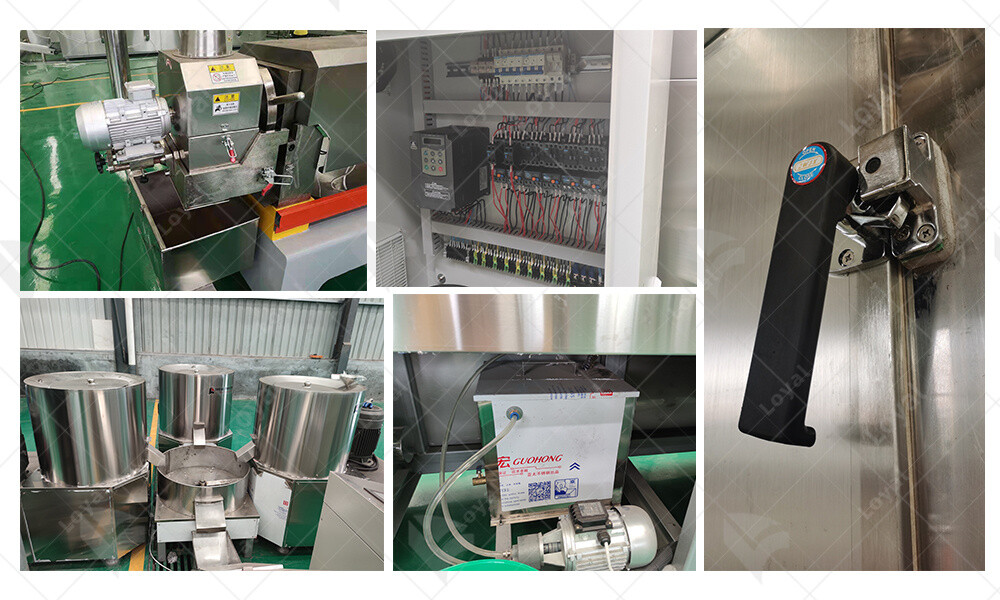
Advanced Processing Techniques
Modern Japanese bread crumbs processing lines integrate automated ingredient mixing systems. These systems ensure consistent mixing of ingredients, enhancing the texture and flavor of the bread crumbs. Automated systems reduce human error and increase efficiency, leading to higher quality end products.
The use of precision cutting technology is crucial in producing uniform bread crumbs. Advanced cutters equipped with high-speed blades and programmable settings allow for exact control over crumb size and shape. This technology ensures that each crumb meets the desired specifications, improving product consistency.
High-temperature baking ovens are employed to achieve the perfect crispiness in bread crumbs. These ovens utilize convection heating to evenly bake the bread, resulting in uniformly toasted crumbs. The precise temperature control systems in these ovens prevent burning and ensure a consistent golden-brown color.
After baking, bread crumbs are rapidly cooled using continuous cooling systems. These systems prevent moisture buildup and ensure that the crumbs maintain their desired texture. By controlling the cooling rate, manufacturers can preserve the quality and extend the shelf life of the bread crumbs.

Quality Control in Bread Crumbs Production
1. Ingredient Quality Assurance:
Quality control begins with the selection of raw materials. Ensuring that all ingredients meet stringent quality standards is crucial. This involves thorough testing of flour, yeast, and other components for purity, freshness, and consistency. By maintaining high standards for raw materials, the final product quality is significantly enhanced.
2. In-Process Monitoring:
Throughout the Japanese bread crumbs processing line, in-process monitoring is essential. This includes checking dough consistency, baking temperature, and moisture content at various stages. Utilizing real-time data collection and analysis helps in making immediate adjustments to maintain product standards.
3. Finished Product Testing:
Finished bread crumbs undergo rigorous testing to ensure they meet all quality specifications. This includes tests for texture, color, taste, and moisture content. Advanced laboratory equipment is used to perform these tests, ensuring precise and reliable results.
4. Hygiene and Sanitation Protocols:
Maintaining strict hygiene and sanitation protocols is vital in bread crumb production. This involves regular cleaning of all equipment and facilities to prevent contamination. Employees must follow proper sanitation procedures, including wearing protective gear and adhering to cleanliness standards. By enforcing these protocols, manufacturers can ensure the production of safe and high-quality bread crumbs.

Innovations in Bread Crumbs Processing
The Japanese bread crumbs processing line has seen numerous innovations in recent years, significantly enhancing efficiency and product quality. One notable advancement is the integration of automated control systems. These systems use advanced sensors and software to monitor and adjust various stages of the production process, ensuring consistent quality and reducing human error. This technological leap not only boosts productivity but also ensures that the bread crumbs meet the highest standards required for commercial use.
Another critical innovation is the development of high-speed mixers and blenders. These machines are designed to handle large volumes of dough with precision, ensuring a uniform texture and consistency. High-speed mixers significantly reduce processing time, enabling manufacturers to increase output without compromising on quality. The incorporation of these mixers into the Japanese bread crumbs processing line has been a game-changer for large-scale production facilities.
Energy efficiency has also been a focal point of innovation. Modern processing lines are now equipped with energy-saving features that minimize electricity and gas consumption. For instance, advanced heating elements and insulation materials are used in baking ovens to ensure even heat distribution while conserving energy. This not only reduces operational costs but also aligns with global sustainability goals, making the Japanese bread crumbs processing line both economically and environmentally friendly.
Lastly, there have been significant improvements in the cleaning and maintenance aspects of bread crumbs processing lines. Automated cleaning systems, often employing high-pressure water jets and specialized detergents, ensure that equipment is thoroughly sanitized with minimal downtime. This innovation is crucial for maintaining hygiene standards and preventing cross-contamination, thereby ensuring that the final product is safe for consumption.
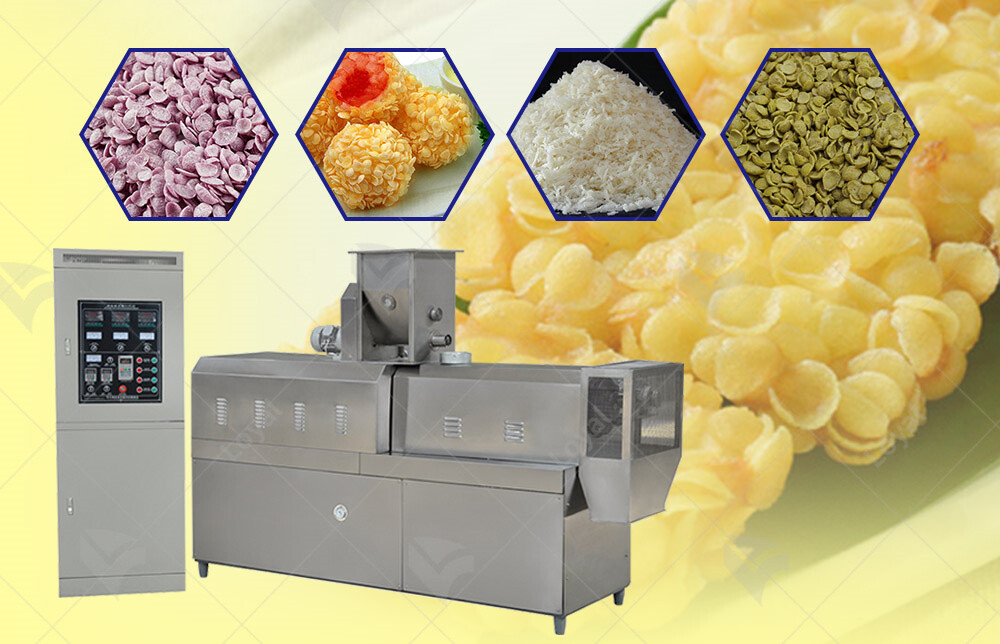
Case Studies and Industry Examples
Several companies have successfully implemented the Japanese bread crumbs processing line, showcasing its effectiveness and versatility. One prominent example is a large-scale bakery in Tokyo that revamped its entire production process by adopting the latest processing line technologies. This transition resulted in a 25% increase in production capacity and a significant improvement in product uniformity, demonstrating the tangible benefits of modern processing equipment.
Another case study involves a mid-sized food manufacturer in Osaka specializing in frozen breaded products. By integrating a fully automated Japanese bread crumbs processing line, the company managed to reduce labor costs by 30% and improve production speed. This allowed them to expand their product range and enter new markets, highlighting the scalability and economic advantages of advanced processing lines.
A third example can be seen in a traditional family-owned bakery in Kyoto, which combined artisanal bread-making techniques with state-of-the-art processing technology. This unique approach enabled the bakery to maintain its traditional flavor and quality while increasing production efficiency. The Japanese bread crumbs processing line played a crucial role in this transformation, demonstrating its adaptability to different production scales and business models.
Lastly, a multinational food corporation with operations in several countries adopted the Japanese bread crumbs processing line to standardize its production processes across different regions. This move not only ensured consistent product quality but also streamlined logistics and supply chain management. The corporation reported a marked improvement in operational efficiency and a reduction in production costs, illustrating the global applicability and benefits of advanced bread crumbs processing technologies.
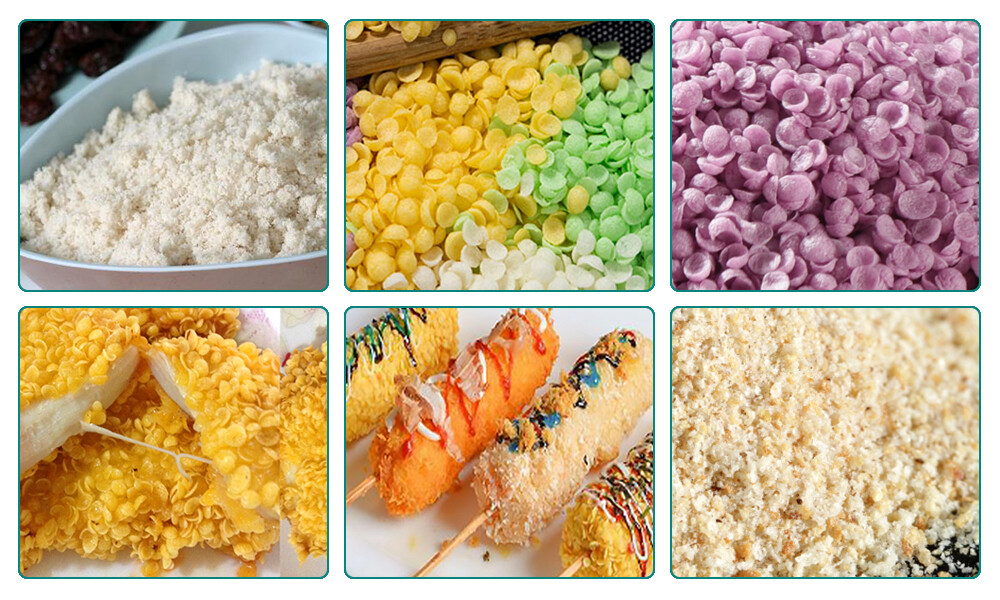
Reference
1.Baker Perkins - bakerperkins.com
2.GEA Group - gea.com
3.Heat and Control - heatandcontrol.com
4.Hosokawa Micron - hosokawamicron.com
5.Fritsch Group - fritsch-group.com
 Commercial Japanese Panko Bread Crumb Grinder Machine
Commercial Japanese Panko Bread Crumb Grinder Machine Japanese Bread Crumbs Processing Line
Japanese Bread Crumbs Processing Line Automatic Cookies Making Machines
Automatic Cookies Making Machines Fully Automatic Biscuit Making Machines
Fully Automatic Biscuit Making Machines